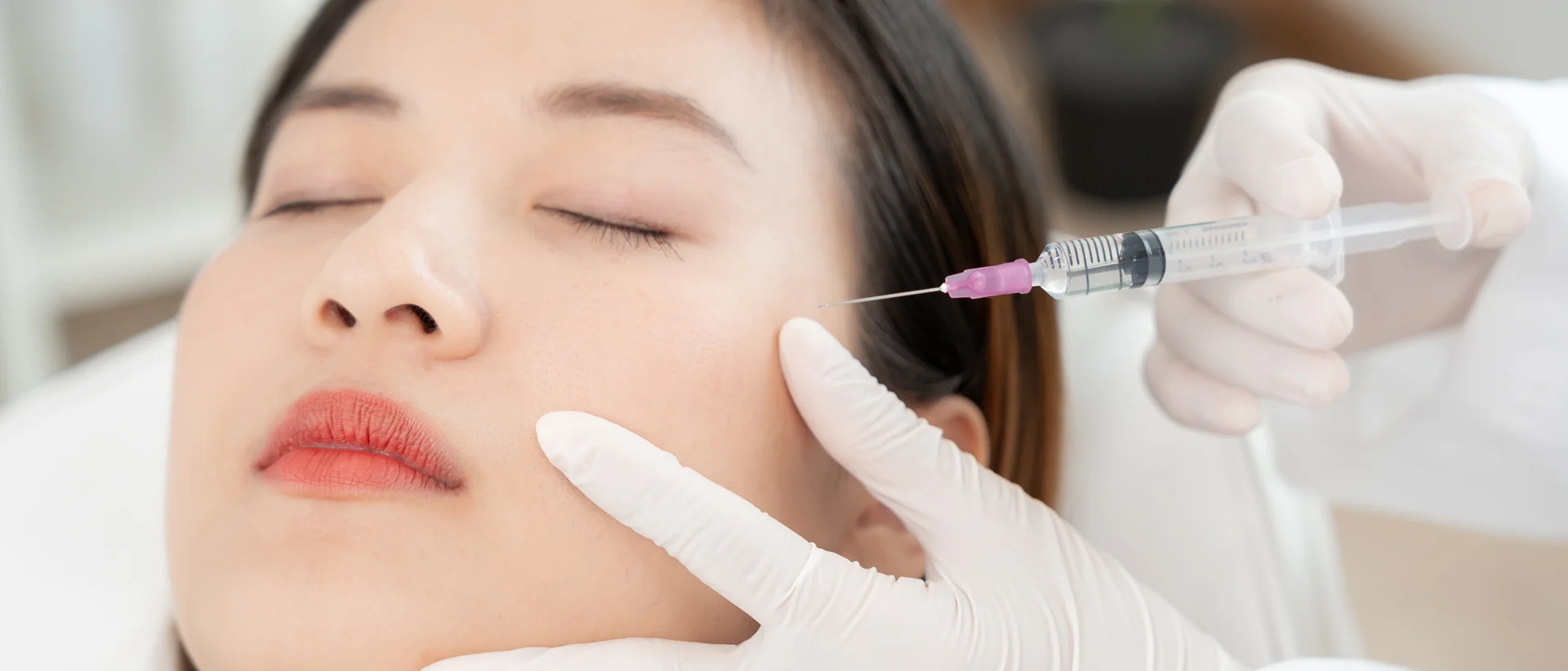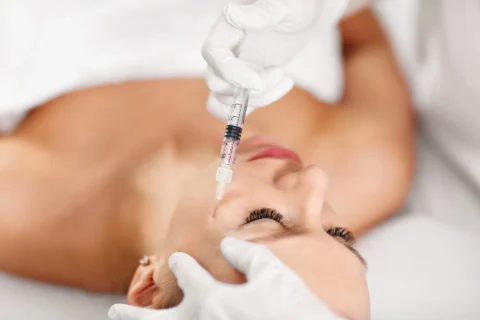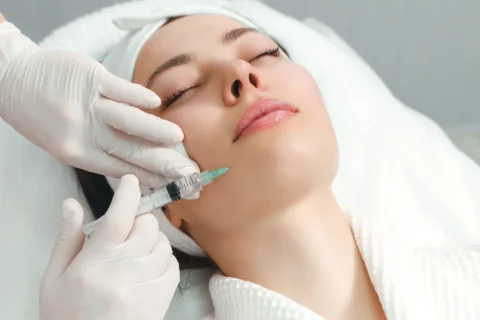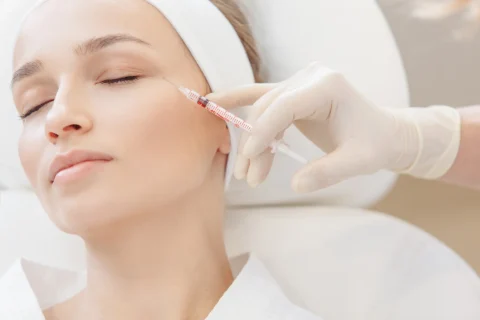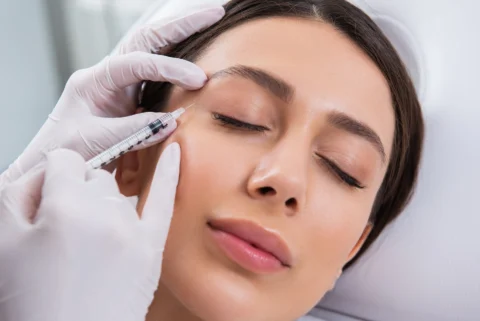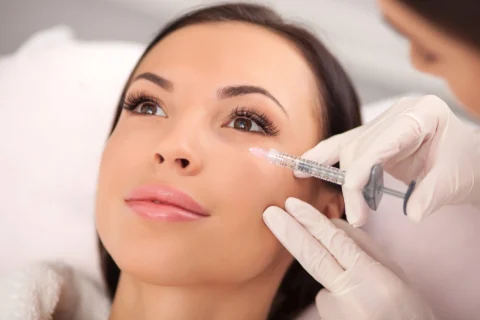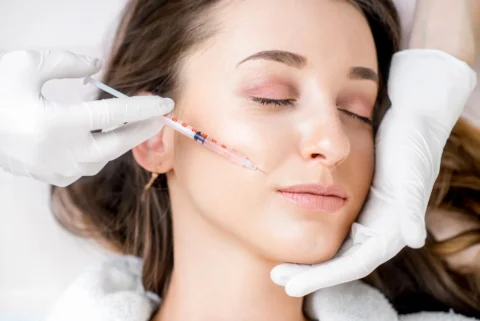Dermal fillers are injectable fillers that can smooth lines, enhance lips, fill hollows, and contour facial features without surgery. While dermal fillers offer remarkable results, they also carry risks ranging from minor to severe.
Being aware of the potential complications of dermal fillers enables individuals to make informed treatment decisions and promptly identify issues.
What Are the Most Common Early Complications from Dermal Fillers?
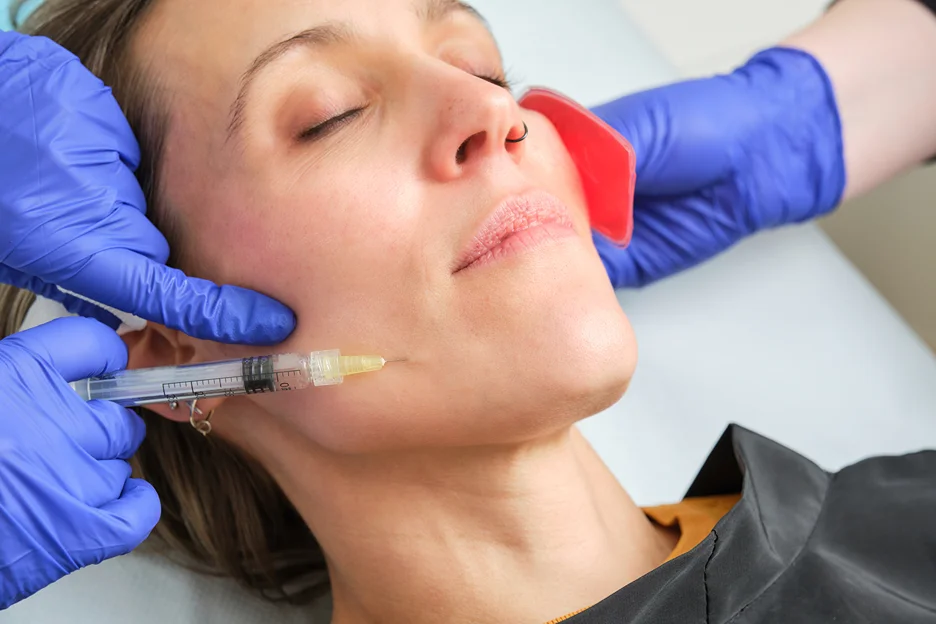
Shortly after receiving dermal filler injections, many patients experience temporary and benign side effects like:
- Bruising: Caused by needle puncture of small blood vessels in the skin. Bruising typically resolves within 7-14 days.
- Swelling: Results from irritation and inflammation triggered by the filler substance itself. Fades over 2-4 days in most cases.
- Redness: Also due to local irritation and usually diminishes within a couple of days.
- Pain: Soreness at the injection sites is common and normally lasts only 24-48 hours.
- Itching: Mild itching around the treated area for the first day or two is not unusual.
- Tenderness: Some sensitivity and tenderness around injection sites often lingers for a few days.
These types of minor side effects are quite common with dermal fillers but pose no long-term issues. While annoying, they are not dangerous and will resolve quickly in most patients.
However, more problematic acute complications can also sometimes occur, including:
Infection
While not common, infection is possible when normal skin barriers are disrupted. Signs include increasing redness, swelling, pain, heat, and pus at the injection site. Infections require antibiotics and possibly drainage.
Bleeding
Excessive bleeding is uncommon but can result in wider bruising and occasionally hematoma formation. Applying pressure and avoiding blood thinners before treatment helps reduce bleeding risk.
Allergic Reaction
Allergies to dermal fillers are rare since modern products use purified materials. However, anaphylaxis is possible and may require epinephrine. Milder allergic reactions cause localized swelling, itching, and redness.
Skin Necrosis
Extremely rare, skin necrosis results from disrupted blood supply. Blanched skin, severe pain, skin sloughing, and scarring can occur. Urgent treatment is needed to restore blood flow.
What Long-Term Complications Are Associated With Dermal Fillers?
While most side effects occur shortly after injection, other issues can develop weeks or months later, including:
Lumps and Nodules
Solid nodules under the skin indicate the filler substance has clumped or clustered. Caused by poor technique or superficial placement, nodules often need excision or injection of hyaluronidase enzyme to break down the filler.
Granulomas
Granulomas are inflammatory lesions that form around filler material. They appear as red, tender lumps weeks or years after injection. Topical or intralesional steroids help reduce inflammation.
Filler Migration
Rarely, injectable filler material can move from the injection site and cause nodules elsewhere. Massaging the area or using hyaluronidase can replace displaced filler.
Asymmetry
Uneven results and facial asymmetry can occur if there is too much volume on one side. Careful injection technique guided by an experienced provider reduces this risk.
Biofilm Formation
Bacteria around filler material can form protective biofilms, causing recurrent infection and inflammation. Long-term antibiotics, drainage, and excision may be required.
Vision Changes
If filler is injected too close to vessels supplying the eye, it can lead to retinal artery occlusion and vision loss. This is extremely rare but a serious complication.
What Factors Increase the Risk of Dermal Filler Complications?
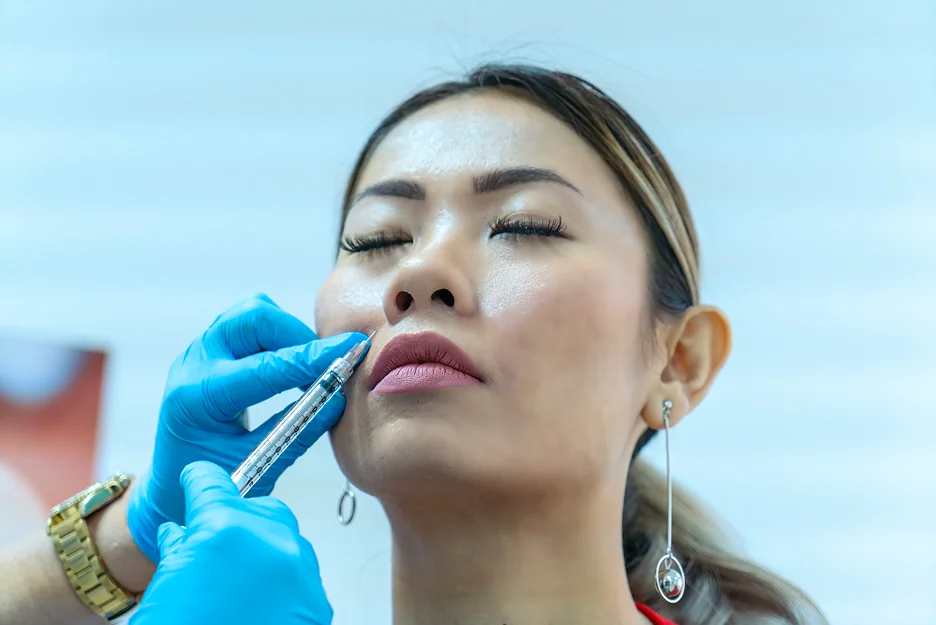
Several factors can make patients more prone to adverse events from dermal fillers. These include:
- Unskilled injector: Choosing an inexperienced or uncertified provider substantially increases risks. Knowledge of facial anatomy and proper injection techniques are vital.
- Overcorrection: Using excessive amounts of filler in a single area raises the likelihood of complications like nodules or asymmetry. A qualified injector will advise on safe volumes.
- Improper product selection: The chosen filler must be suited for the treatment area and desired outcome. An expert provider chooses appropriate products.
- Poor injection technique: Incorrect placement, depth, volume, or angle of injection makes complications more probable, as does failure to aspirate properly.
- Superficial placement: Filler placed too close to the surface often clumps or causes visible irregularities. The chosen filler must match the depth of injection as well.
- Pre-existing conditions: Conditions causing poor wound healing or compromised immunity increase infection risk after dermal filler treatment.
- History of complications: Those with prior filler-related issues may be predisposed to additional problems.
How Can the Risk of Dermal Filler Complications Be Minimized?
While complications cannot be fully avoided, certain measures greatly reduce the likelihood of adverse events:
- Verify qualifications. Choose an injector who is board-certified and experienced specifically in dermal fillers.
- Select quality products. Only use FDA-approved dermal fillers from reputable brands purchased directly from the manufacturer.
- Avoid overcorrection. More filler does not equate to better results. Follow your provider’s volume recommendations.
- Check for allergies. Though rare, have any known allergies recorded to avoid products that may cause reactions.
- Prepare the skin. Follow cleansing and avoidance of makeup, lotions, etc. before treatment as directed to lower infection risks.
- Follow aftercare guidance. Carefully adhere to all post-procedure instructions on massage, activity, avoiding makeup, etc. to prevent issues.
How Are Complications From Dermal Fillers Treated?
Despite all precautions, complications can still arise in some cases after dermal filler treatment. Depending on the specific adverse event, several management options exist:
Bruising, Swelling, Redness
Most cases resolve with time and over-the-counter pain/anti-inflammatory medication as directed by your provider. Cold compresses and head elevation help reduce swelling. Avoid blood thinners.
Infection
Your provider will prescribe oral antibiotics matched to the causative bacteria. Warm compresses and drainage of any abscess may be required. Avoid additional fillers until resolved.
Allergic Reaction
Mild reactions are treated with oral antihistamines and topical hydrocortisone. Severe systemic reactions may require epinephrine and hospitalization to manage airway constriction, low blood pressure, etc.
Lumps and Bumps
Gentle massage can smooth out small lumps. Hyaluronidase injections dissolve hyaluronic acid fillers. Intralesional steroids reduce inflammation. Larger nodules may need excision.
Skin Necrosis
Emergency intervention is required to restore blood supply. Nitroglycerine paste, hyaluronidase, warm compresses, steroids, anticoagulants, and hyperbaric oxygen may be used depending on the case. Early surgery is sometimes necessary to debride dead tissue.
Vision Changes
There are few effective treatments once filler occludes eye vasculature. Ophthalmologic consultation is urgent, and various medications may be attempted to improve retinal perfusion in the hope of restoring vision.
Are Dermal Fillers Safe When Used Correctly?
While all medical aesthetic treatments carry some degree of risk, dermal fillers remain very safe when practiced appropriately. Major complications are exceptionally rare.
However, complications become far more likely with unqualified injectors administering substandard products improperly. So long as board-certified dermatologists, facial plastic surgeons, or other core specialists administer FDA-cleared dermal fillers in approved ways, adverse events are uncommon.
Some Potential Side Effects Are Normal
Most potential side effects are minor and temporary. Moderate issues like nodules and infection are usually manageable. Severe complications can generally be avoided through proper injection methods.
Overall, dermal fillers offer an outstanding non-surgical means of facial rejuvenation and enhancement with a highly favorable safety profile. But ensuring you choose your provider carefully is imperative to avoiding preventable problems.
Conclusion: Be Informed and Proceed Safely
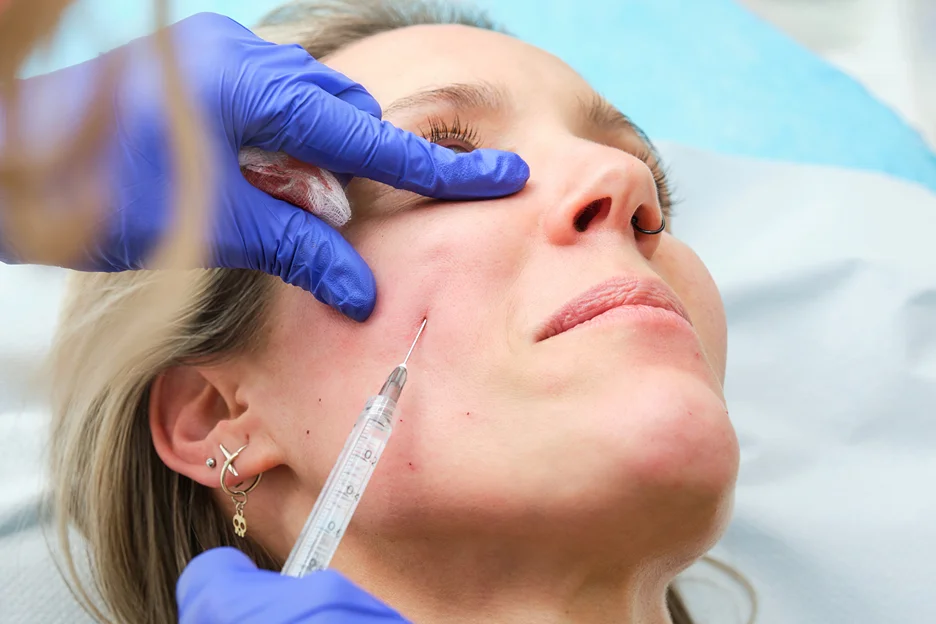
Dermal fillers provide an excellent solution for facial aging and skin concerns like thin lips or sunken areas with relatively low risks. However, complications ranging from bruising to more hazardous issues like necrosis or vision loss, while very uncommon, remain possibilities.
Being fully informed allows individuals to weigh the benefits versus risks rationally when considering dermal fillers. And understanding what to expect after the procedure, practicing proper aftercare, and reporting any unusual symptoms early all help keep you safe.
The Power of Choosing A Reputable Injector
Choosing an appropriately experienced and credentialed injector who carefully evaluates your needs and desired outcome is critical as well. Together, you can determine if dermal fillers are the right option and how to maximize your results while minimizing avoidable risks.
With thousands of successful dermal filler treatments performed annually, consumers can confidently approach these cosmetic procedures knowing today’s dermal fillers are more refined than ever.
But always exercise due diligence – becoming fully educated, choosing properly qualified providers, and following all pre- and post-treatment guidance.

